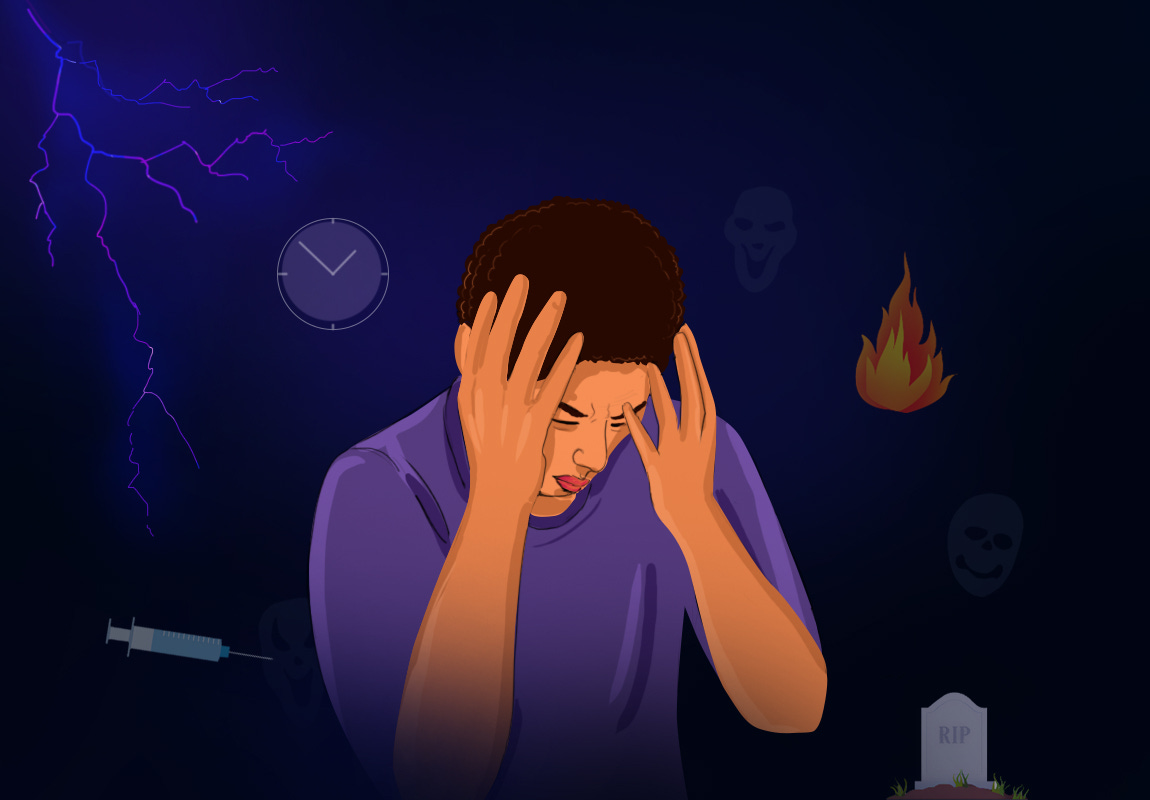Do cockroaches bother you when they fly around and land on your body? Of course, no one wants to caress a cockroach, but some people are terrified of even touching one. This could be a phobic reaction, depending on how severe it is. A phobia is a strong and irrational fear of a particular object, living being, or situation. The term ‘phobia’ is derived from the name of the Greek god Phobos, who used to frighten his enemies.
According to the Diagnostic and Statistical Manual of Mental Disorders, 5th Edition, Text Revision (DSM-5–TR), in order to be diagnosed with phobic disorder, one must have a persistent and disproportionate fear of a specific object, social situation, or crowded place that actually poses little danger. Exposure to the phobic stimulus almost always results in an intense anxiety response. The patient is usually aware that her fear is irrational, but she has no control over her reaction. The phobic situation is usually avoided or tolerated with great discomfort, if forced to endure it.
When forced to confront the phobic stimulus, the reactions may be similar to or less severe than a panic attack. The person facing the phobic object is completely focused on it, the effect is intense fear, and the behavioural reaction is escape. The negative affect and accompanying physiological reactions subside as soon as the person is able to escape the presence of the phobic stimulus. As a result, the flight reaction is reinforced because it provides tension relief.
Specific phobias, social phobias, and agoraphobia are the three types of phobias recognised by the DSM-5–TR. Irrational fear of specific objects, animals, or situations is referred to as a specific phobia. Fear of enclosed spaces or claustrophobia, fear of heights or acrophobia, fear of blood or haemophobia, fear of snakes or ophidiophobia, fear of spiders or arachnophobia, fear of fire or pyrophobia, and even fear of phobias or phobophobia are common examples.
The specific phobias can be divided int some subtypes like
animal type - cued by animals or insects
natural environment type - cued by objects in the environment, such as storms,
heights, or water
blood-injection-injury type - cued by witnessing some invasive medical procedure
situational type - cued by a specific situation, such as public transportation,
tunnels, bridges, elevators, flying, driving, or enclosed spaces
other type - cued by other stimuli than the above, such as of choking, vomiting, or contracting an illness.
As the name implies, social phobias are persistent irrational fears associated with the presence of other people. Remember how we used to get tongue tied at a job inter? Social phobia is an extreme manifestation of this type of discomfort. Extreme feelings of shyness and self-consciousness can often develop into a powerful fear, making it difficult to participate in everyday social situations. People who suffer from social phobia usually find it easy to interact with close and familiar people. Meeting new people, talking in a group, or speaking in public, on the other hand, can set off the phobic response.
Situations where one may be evaluated frequently become phobic. We all experience social anxiety from time to time, especially in judgmental situations. However, a person with diagnosable social phobia frequently becomes incapable of normal situations.
DSM-5–TR places a special emphasis on agoraphobia without a history of panic disorder. Agoraphobia is excess anxiety or fear about a place or situation. The person might feel helpless and trapped in situations, forcing him to avoid whatever that makes him feel extremely anxious. A person who has experienced anxiety or panic attacks due to a particular situation tends to develop agoraphobia and it can affect the diverse areas of a person’s day to day life. Medication and Psychotherapy seem to be effective treatments for Agoraphobia.
It begins slowly and insidiously in early adolescence or late childhood and progresses to become debilitating. If it occurs as part of a panic attack, it should be coded under Panic disorders. If it causes anxiety and a strong desire to avoid something but does not result in a palpable panic attack, it should be coded as Phobia.
Treatment of Phobic Disorder
Anxiolytics and antidepressants, as with panic disorder, are used to treat phobic disorders, particularly social phobia. Psychological treatments, on the other hand, are more effective. Depending on your orientation and case history, you can pursue psychoanalytic, behavioural, or cognitive therapies. Psychoanalytic therapies attempt to unearth repressed conflicts and deal with them on a mature level, rather than projecting them onto objects and situations. Among the behavioural treatment options are systematic desensitisation, flooding, and relaxation techniques. Systematic desensitisation is the process of gradually exposing the person to the phobic object.
Now put on your thinking hats and think about the following questions for a couple of minutes.
How would you explain the term “phobia” to your students?
Can you think of some factors that may contribute to phobias?
Can you think of ways to help a friend or relative who is suffering from different types of phobias?
Write down your thoughts and discuss them with your students, children and your colleagues. Listen to their views and compare them with your own. As you listen to others, note how similar or different your views are to others’.
Thank you for listening. Subscribe to The Scando Review on thescandoreview.com.
Happy Teaching!














Phobias